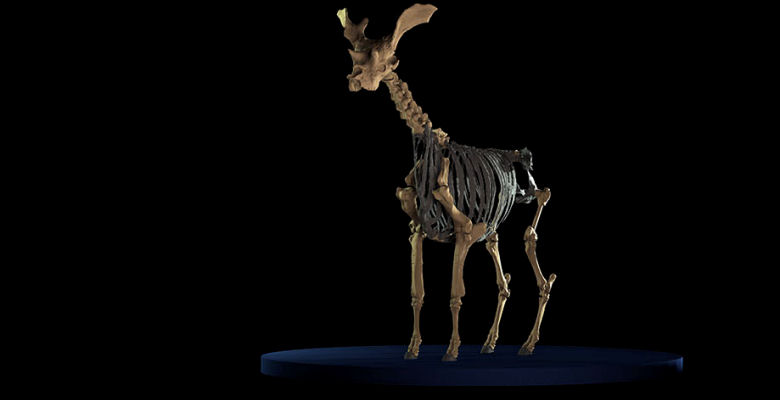Gigantic giraffids

Using the latest imaging technology, researchers have revealed more information about a prehistoric mammal, previously thought to be an elephant-sized, moose-like creature, which was actually a close relation to modern-day giraffes.
LJMU’s Dr Peter Falkingham, from the School of Natural Sciences and Psychology, supported Royal Veterinary College PhD student and project lead Chris Basu with the research, creating the world’s first digital image of Sivatherium giganteum.
Modern-day giraffes are famous for their long necks and skinny legs, but they didn’t begin to evolve these attributes until around 7.5 million years ago.
Sivatherium giganteum is a gigantic, extinct giraffid with huge horns, a flattened face and short stubby legs, which it evolved separately from the lineage that led to living giraffes.
Inhabiting in what is now India more than one million years ago, so immense and unique was its size and shape, that when palaeontologists first discovered it in the 1800s, they struggled to classify what kind of animal it was. However, later developments in paleontological analysis revealed that the bizarre looking animal was related to giraffes.
The aim of developing the skeleton model was to find out even more about the peculiar prehistoric mammal. Using the model, the researchers were able to estimate other aspects of the animal’s physiology, body shape and appearance. With the reconstruction, the team could establish that the animal probably weighed more than a tonne, at around 1200 kilograms. It is potentially the largest giraffid that ever existed, even heavier than giraffes living today.
The image of the skeleton was created using three-dimensional models of 26 fossilised bones and more than 1,000 pictures taken of Sivatherium giganteum fossils. The research team used a collection of fossils from the Natural History Museum in London.
Dr Falkingham commented: “There’s been a real advance over the past few years in computational methods, particularly in the digitization technique we used, photogrammetry. It means that we can quickly and cost-effectively capture 3D morphology of skeletons to work with them in the virtual environment. That in turn opens up a whole world of possibilities, including estimating the mass of the animal as we’ve done here.”
The research has gained coverage on the BBC, in the Daily Mail and on www.phys.org


